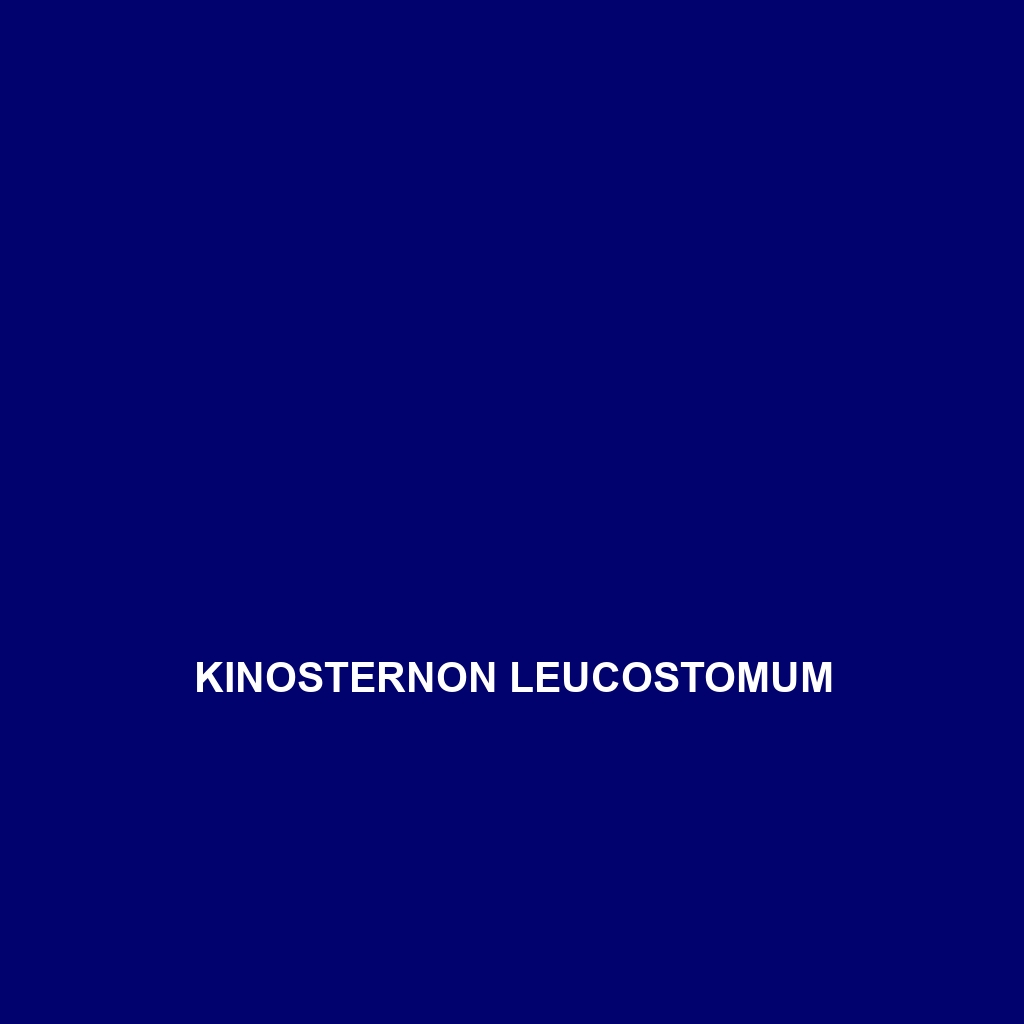Common Name
Kinosternon leucostomum
Scientific Name
Kinosternon leucostomum
Habitat
Kinosternon leucostomum, commonly known as the white-throated mud turtle, is primarily found in freshwater habitats across the lowland areas of Central America and parts of northern South America. This species thrives in various environments, including rainforests, temperate forests, and savannas. They prefer waters that are slow-moving or still, such as ponds, swamps, and marshes, as well as areas with abundant aquatic vegetation. The ideal climate for this species consists of warm temperatures and high humidity, making tropical and subtropical regions particularly suitable for their survival. Ultimately, the white-throated mud turtle is an adaptable creature that can tolerate varying environmental conditions within its range.
Physical Characteristics
The white-throated mud turtle has a distinctive appearance that makes it easily recognizable. Adult Kinosternon leucostomum typically measures between 12 to 25 centimeters (4.7 to 9.8 inches) in carapace length. The carapace is generally oval-shaped and smooth, featuring a dark brown to olive-green coloration. One of the distinguishing features of this turtle is its striking white or yellow throat, which contrasts sharply with its darker shell. Its limbs are robust and webbed, ideal for swimming and navigating through murky waters. Additionally, these turtles possess a small, pointed snout that aids in foraging for food on the bottom of their aquatic habitats.
Behavior
Kinosternon leucostomum exhibits intriguing behaviors that contribute to its adaptability and survival. This species is primarily diurnal but can exhibit nocturnal behavior, especially during warmer months. They are often seen basking on logs or rocks during the day to absorb sunlight, which is essential for regulating their body temperature. Social interactions typically occur in the spring during mating season. Male turtles engage in elaborate courtship displays, including swimming in circles around the female and gently nipping at her fins. Furthermore, they are generally solitary creatures outside of the breeding season, retreating to underwater vegetation or mud to rest when not foraging.
Diet
Kinosternon leucostomum is classified as an omnivore, showcasing a diverse diet that consists of both plant and animal matter. Their diet primarily includes aquatic plants, algae, small fish, insects, and crustaceans. This adaptability in their feeding patterns allows them to thrive in various environments rich in different food sources. Their foraging method involves scavenging the river and pond bottoms, where they utilize their keen sense of smell to locate food. Their ability to consume both plant and animal matter also plays a critical role in nutrient cycling within their ecosystems.
Reproduction
The reproductive cycle of Kinosternon leucostomum typically begins in the spring, coinciding with the warm temperatures that trigger mating behaviors. After a courtship period, females lay clutches of 3 to 10 eggs in sandy or soft substrates, often near water bodies. The gestation period lasts about 60 to 90 days, depending on environmental conditions such as temperature and humidity. Upon hatching, the tiny turtles are independent and receive no parental care. This allocation of resources toward producing multiple offspring increases the chances of survival in their natural habitat, providing a buffer against predation and environmental threats.
Conservation Status
Currently, Kinosternon leucostomum is listed as a species of “Least Concern” according to the IUCN Red List. However, like many freshwater species, it faces threats from habitat loss due to urban development, pollution, and climate change. Conservation efforts are crucial to ensuring the long-term survival of this species, particularly in regions facing rapid environmental changes. Protecting their natural habitats and implementing sustainable land-use strategies are essential steps to support the population of the white-throated mud turtle.
Interesting Facts
One fascinating aspect of Kinosternon leucostomum is its ability to tolerate low oxygen levels in stagnant waters, allowing it to thrive in environments where other species may not survive. Additionally, their notable white or yellow throat not only serves as a distinguishing characteristic but may also play a role in mating displays, making them more attractive to potential mates. The longevity of these turtles can be striking, as they can live for over 30 years in favorable conditions, highlighting their adaptability and resilience.
Role in Ecosystem
Kinosternon leucostomum plays a vital ecological role in its freshwater habitats. As both a predator and prey, these turtles contribute to the balance of their ecosystems. They help regulate populations of insects and aquatic plants, contributing to nutrient cycling and maintaining the ecological integrity of their habitats. Furthermore, their presence serves as an indicator of environmental health, as they require clean and well-structured ecosystems to thrive. Protecting species like the white-throated mud turtle ensures the preservation of biodiversity and the overall health of freshwater ecosystems.
